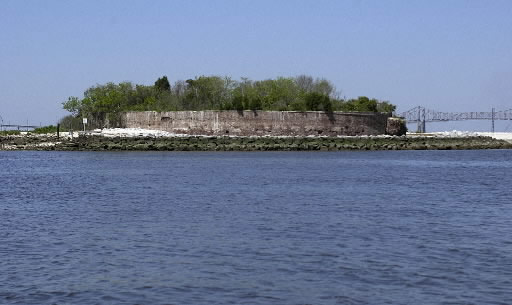Fort Moultire
I have a confession to make, prior to taking this course, I had never heard of
General William Moultrie or Fort Moultrie. Who knows, maybe I was taught the material, but I certainly did not retain the information. It could be as something as simple as not being in class that day, or skipping the required readings for something less important, like binge watching something on Netflix. Whatever the case is, I am so grateful I had a chance to learn the history of Fort Moultrie.
Above: Fort Moultrite Visitor Center Sign
Above: Backside of Fort Moultrie. I tried so hard to capture a photo with the flag blowing,
but the wind just would not cooperate. Oh well, this Fort has seen worse struggles.
Fort Moultrie has had a place in a number of major conflicts, including: the American Revolution, the War of 1812, the Civil War, World War I, and World War II. However, for the purposes of this post, I really want to focus on the role of Moultrie during the Revolution (I mean after all, that is what the course was focusing on).
Above: What a fine looking group of people.
Fort Moultrie was a huge deal during the American Revolution. Located on Sullivan Island, in the Charleston Harbor, the Fort was a necessity for the Patriots. As South Carolina was fighting for Independence, Charleston became the center of Revolutionary conflict. The Patriots knew keeping Charleston in their hands was a critical in winning the War. As a way of fighting off British attacks, the Patriots assembled Fort Moultrie.
Above: Map showing the location of
Sullivan Island in relation to Charleston.
Key Revolutionary War Patriot, General William Moultrie oversaw the building of the Fort. Construction began in December 1775. Both soldiers and slaves made the fort using palmetto logs and sand. Fort Moultrie saw its first battle of the Revolution on June 28th, 1776 when ten British war ships attacked Sullivan Island. At the time of the attack, the backside of the Fort was not complete.
Above: Model demonstrating how palmetto logs and
sand were used in the construction of the fort.
Despite not having a completed Fort, the Patriots were still able to withstand British attack. Because of this decisive victory, the British did not take control of Charleston until 1780. Without the victory of the men who fought at Fort Moultrie, the British may have taken control of Charleston in 1776. If this would have happened, it may have drastically changed the outcome of the Revolutionary War.
Above: Backside of Visitor's Center (as seen from the fort).
Despite a cheesy outdated video, the Visitor Center does an excellent job explaining the history of the Fort. Not only does the Museum explain the history of the Fort, they elaborate on the various phases of Fort Moultire. If you are ever in Charleston (which you need to make a point to go), visiting Fort Moultrie is a must.




















